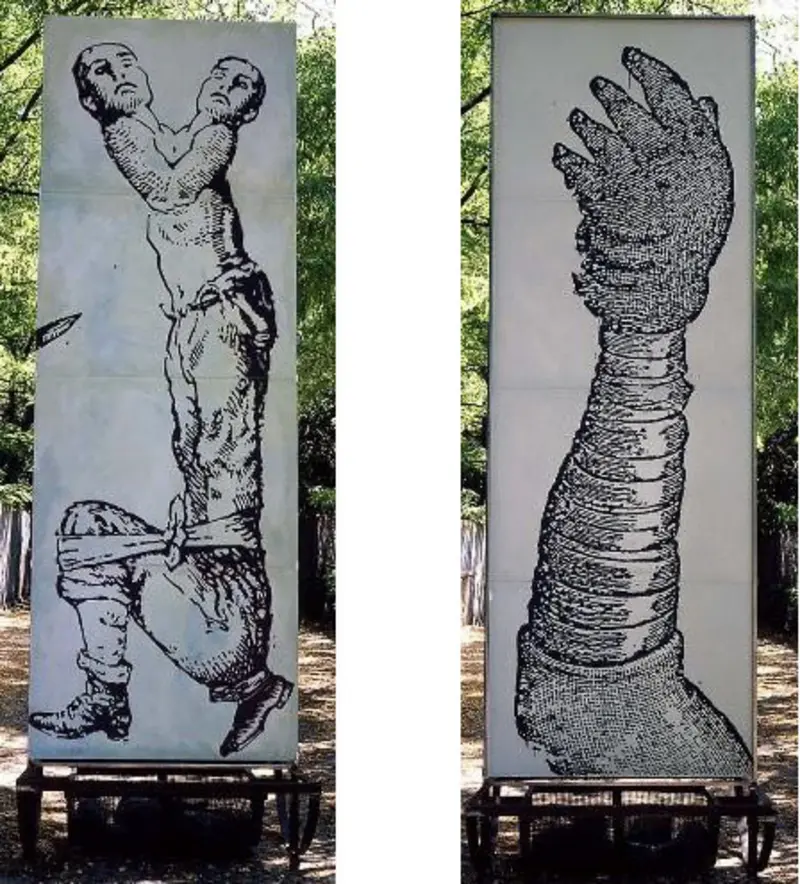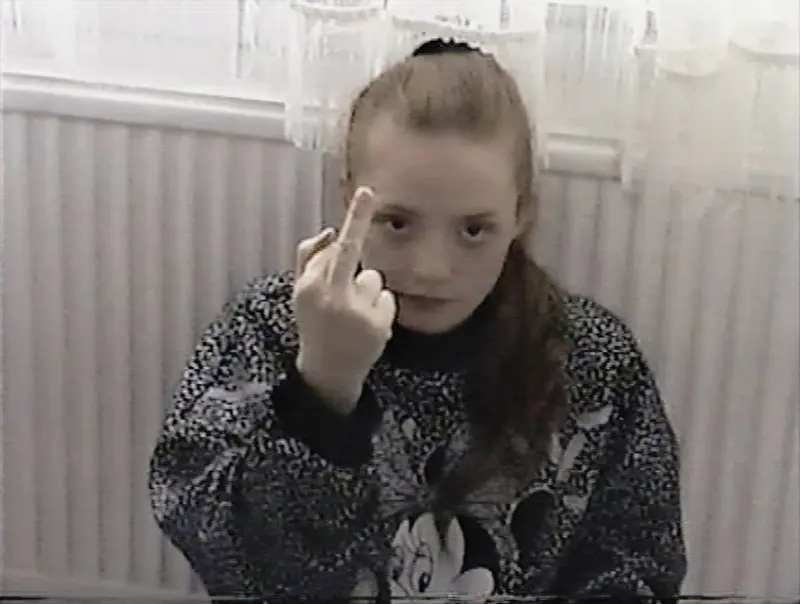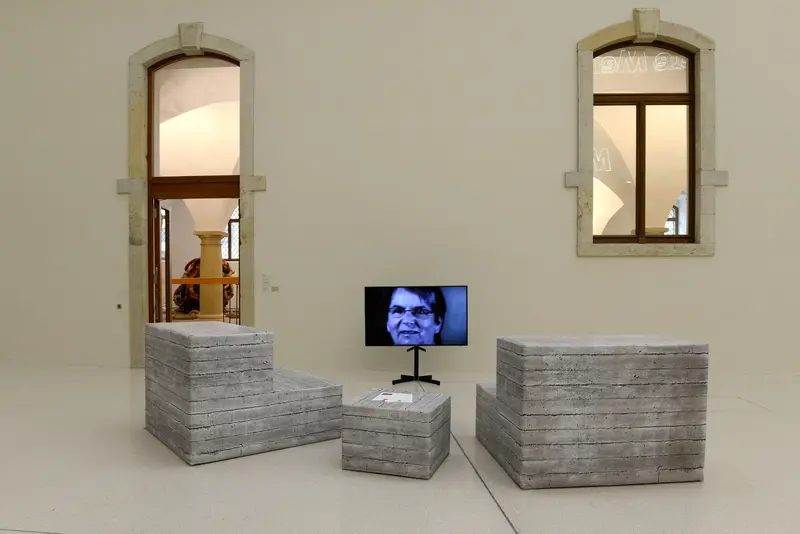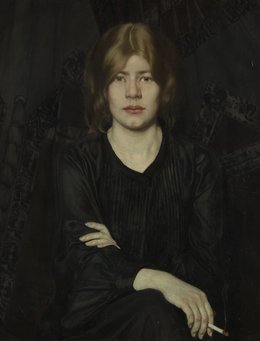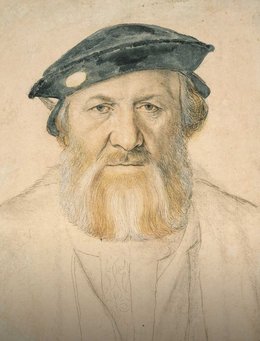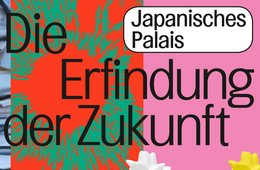[Translate to English:] Erstmals wird Via Lewandowskys
For the first time, Via Lewandowsky's (b. 1963) swaying picture with its two sides, “Frozen Limbs Break Easily” and "Greeting," is being exhibited in Dresden. This work dates back to 1988/89: while “Frozen Limbs Break Easily” was created in 1988 in East Berlin, the other side, entitled “Greeting,” was painted in 1989 in West Berlin, where the artist was staying at the time of the fall of the Berlin Wall, having been invited there in connection with an exhibition at the Haus am Waldsee. Historically, then, it is a German-German work of art, which is also associated with Dresden, where the artist trained, by virtue of the fact that the weights holding the base of the swing in place are stones from the ruins of the Frauenkirche.

